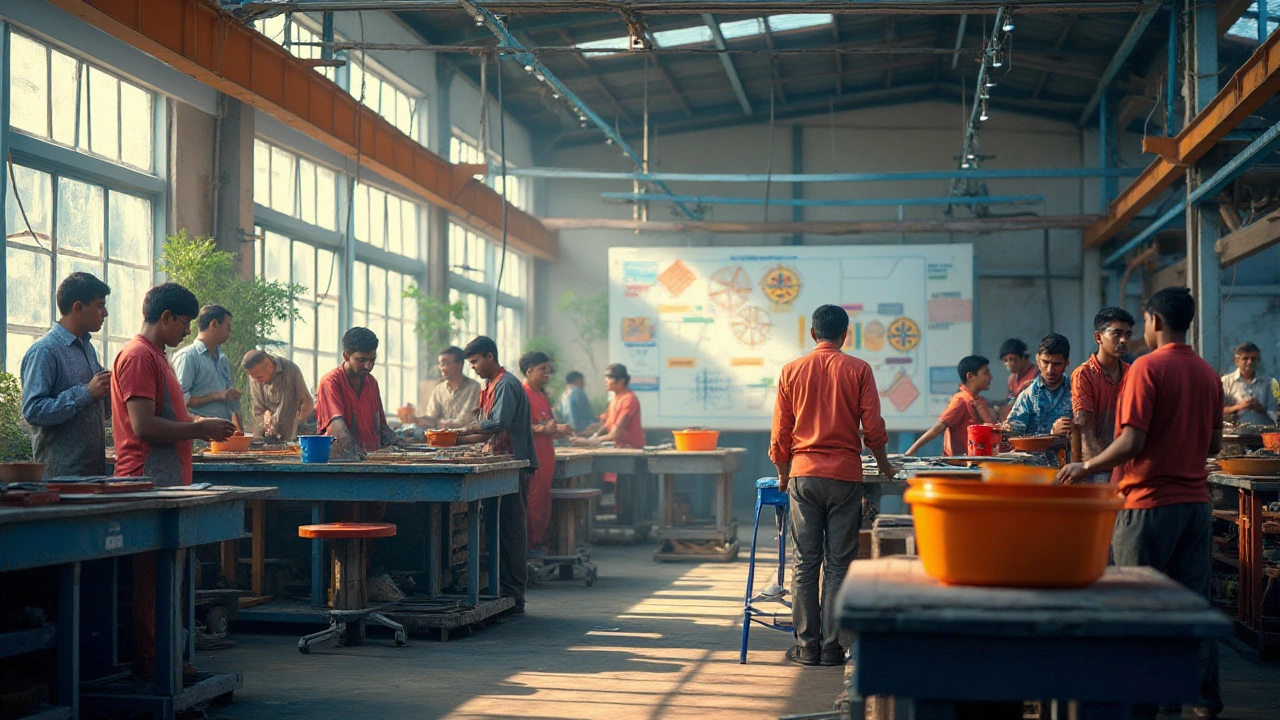Lean Manufacturing: Simple Steps to Cut Waste and Speed Up Production
Ever walked into a factory and felt something was off—machines idle, piles of extra parts, workers juggling the same job twice? That’s waste talking. Lean manufacturing is all about hunting down that waste, streamlining flow, and getting more done with less. It’s not a fancy buzzword; it’s a practical toolbox you can start using today, whether you run a tiny workshop or a big plant.
Core Principles You Can Apply Right Now
The lean philosophy rests on five easy ideas. First, value must be defined from the customer’s point of view – what are they really paying for? Second, map the value stream to see every step that adds value and, more importantly, every step that doesn’t. Third, create a continuous flow so items move smoothly without bottlenecks. Fourth, let the pull system dictate production – only make what’s needed, when it’s needed. Finally, pursue perfection by constantly tweaking the process.
Start small: pick one product line, draw a quick flow chart, and spot the obvious delays. Remove them, and you’ll see a noticeable boost in output without hiring extra hands.
Practical Tools for Indian Manufacturers
Tools like 5S (Sort, Set in order, Shine, Standardize, Sustain) turn chaotic workspaces into tidy, efficient zones. A quick 5S audit can shave minutes off setup time, which adds up to hours over a month.
Kaizen events – short, focused improvement bursts – work well with skilled crews. Gather a small team, give them a clear problem (e.g., long changeover time), and let them brainstorm fixes for a day. Often the solution is a simple jig or a better layout.
Kanban boards replace endless spreadsheets. Use color‑coded cards on the shop floor to signal when a part is low, prompting a pull‑based refill instead of a push‑based overproduction.
In India, power outages and supply hiccups are real challenges. Lean helps you build buffer zones that are just enough to keep running, not so large they tie up capital. Pair lean with JIT (just‑in‑time) deliveries from trusted local vendors, and you’ll reduce inventory costs while staying resilient.
BK Allied has seen firms cut scrap by 30% and improve on‑time delivery by 20% after introducing lean cells. The key was training floor supervisors in visual management and giving them authority to stop the line when something went wrong.
Ready to start? Follow these three steps:
- Pick a single process that hurts your profit the most.
- Map it, identify non‑value steps, and apply 5S.
- Run a one‑day Kaizen with the people who do the work every day.
Measure the change – track cycle time, defect rate, and labor hours. If you see improvement, roll the same method to the next process. Lean is a marathon, not a sprint, but each small win adds up fast.
So, whether you’re setting up a new plant in Gujarat or modernizing an older unit in Baddi, lean manufacturing gives you a clear roadmap to do more with less. Start trimming waste today, and watch your bottom line grow.
What Are the 7 Flows of Manufacturing? A Clear Guide to How Things Get Made
Learn the seven key flows that drive manufacturing success - material, information, energy, financial, human, quality, and feedback. Understand how they connect and how to fix bottlenecks in your production process.
Read MoreUnderstanding the 7 Wastes in Lean Manufacturing for Startup Success
In manufacturing, waste reduction is key to success. This article explores the seven types of waste identified in lean manufacturing: overproduction, waiting, transport, excess inventory, motion, defects, and over-processing. By understanding these wastes, startups can improve efficiency, lower costs, and increase productivity. The article provides actionable insights and tips for entrepreneurs looking to optimize their manufacturing processes.
Read More

